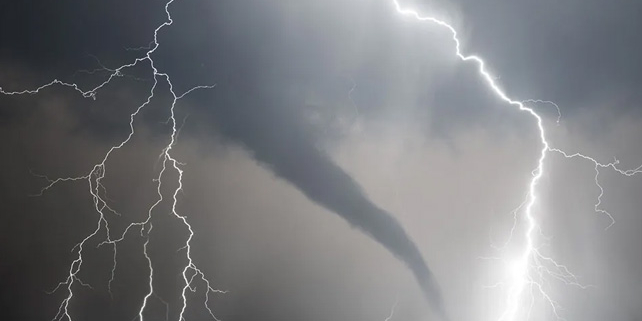Tornado Safety: How to Protect Yourself and Your Loved Ones
Tornadoes are among nature’s most powerful and destructive forces. With their rapid onset and devastating potential, it’s crucial to be prepared and know how to act when a tornado strikes. This guide will provide essential tips and strategies to help you stay safe before, during, and after a tornado.
Understanding Tornadoes
A tornado is a violently rotating column of air extending from a thunderstorm to the ground. They can occur almost anywhere but are most common in the central United States, known as “Tornado Alley.” Tornadoes can vary greatly in size, speed, and duration, with some lasting only a few minutes while others persist for hours.
Before a Tornado: Be Prepared
- Stay Informed:
- Weather Alerts: Keep a NOAA Weather Radio or a reliable weather app on your phone to receive alerts about tornado watches and warnings.
- Know the Signs: Be aware of the signs of a tornado, such as a dark, often greenish sky, large hail, a visible funnel cloud, or a loud roar similar to a freight train.
- Create a Plan:
- Safe Room: Identify a safe place in your home where you can take shelter. This should be a basement or a small, windowless interior room on the lowest level.
- Emergency Kit: Prepare an emergency kit with essential items such as water, non-perishable food, a flashlight, batteries, a first-aid kit, medications, and important documents.
- Family Plan: Ensure all family members know the plan and conduct regular tornado drills to practice getting to the safe room quickly.
- Secure Your Home:
- Reinforce Shelter: If possible, reinforce your safe room or basement with additional protection against debris and high winds.
- Outdoor Safety: Secure outdoor items that can become projectiles in high winds, such as lawn furniture, grills, and trash cans.
During a Tornado: Take Immediate Action
- Seek Shelter Immediately:
- Indoors: Go to your pre-identified safe room. If you’re in a mobile home or vehicle, find a sturdy building to shelter in.
- Outdoors: If caught outside, lie flat in a low-lying area like a ditch, covering your head with your hands. Avoid seeking shelter under overpasses.
- Protect Yourself:
- Cover Up: Use blankets, mattresses, or sturdy furniture to protect yourself from flying debris.
- Stay Low: Crouch low to the ground, facing down, and cover your head with your hands.
- Stay Informed:
- Weather Updates: Keep listening to your weather radio or app for updates and instructions.
After a Tornado: Stay Safe and Recover
- Assess Safety:
- Check for Injuries: Administer first aid if needed and seek medical attention for serious injuries.
- Avoid Hazards: Be cautious of debris, downed power lines, and gas leaks.
- Communicate:
- Emergency Services: Contact emergency services if you need assistance.
- Family and Friends: Let loved ones know you are safe.
- Inspect Your Home:
- Structural Damage: Carefully inspect your home for structural damage. If your home is unsafe, stay with friends, family, or at a designated shelter.
- Utilities: Turn off utilities if you suspect damage to avoid fires or gas leaks.
- Document Damage:
- Insurance Claims: Document any damage to your property for insurance claims. Take photos and keep records of any repairs.
- Stay Informed:
- News and Updates: Continue listening to local news for information about relief efforts and safety advisories.
Conclusion
Tornadoes can be terrifying and devastating, but being prepared can significantly increase your chances of staying safe. By staying informed, having a plan, and knowing what to do during and after a tornado, you can protect yourself and your loved ones from harm. Remember, preparation and quick action are your best defenses against these powerful storms. Stay safe!






Leave a Reply
Want to join the discussion?Feel free to contribute!